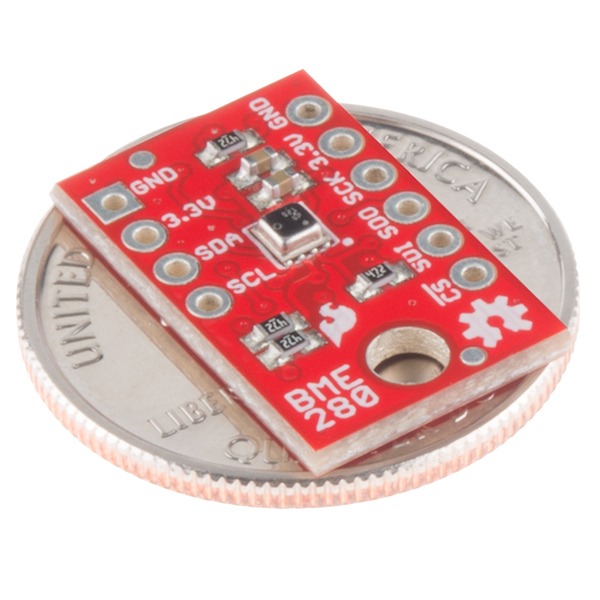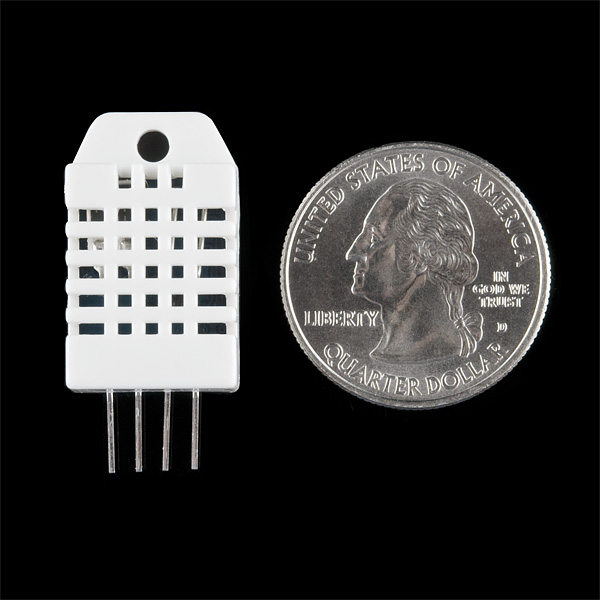Nick Kunz is a Graduate Student at Columbia University. His research interests are at the intersection of analytics, statistics, and machine learning in various topics in urbanism. His previous experience is in design, real estate development, and financial services consulting. Education includes international work in Europe and the Middle East. Previous civil and military service with a deep commitment to the public good. Inactive musician with previous participation in various roles on tours across the United States and Canada. More info at nickkunz.com
Author Archives: Nick Kunz
Particulate Matter Sensor
Technical Description:
The Sensirion Particulate Matter Sensor SPS30 is a compact, high quality, optical particle sensor that uses laser scattering and Sensirion’s innovative contamination resistance technology to achieve superior binning and particle measurement. This sensor allows users to measure mass concentration and number of particles.
The compact form factor, measuring just under 41mm x 41mm x 12mm, combined with a sensor lifetime over 8 years and a self cleaning procedure, makes the SPS30 the perfect sensor for projects in difficult to access locations. It is designed to include an easy to use 5-pin cable to make using the SPS30 a snap. The 1.5mm connector is broken out to 5 breadboard friendly wires color coded to make hooking up the SPS30 easy.
Limitations:
The SPS30 sensor is effectively limited to the UART interface with Arduino.
Skill:
Beginner Coding Skills 2/5, Beginner Electrical Prototyping 1/5
Sensor:
SPS30
https://www.sparkfun.com/products/15103
Sample Tutorial:
SPS30 Data Sheet
https://cdn.sparkfun.com/assets/2/d/2/a/6/Sensirion_SPS30_Particulate_Matter_Sensor_v0.9_D1__1_.pdf
UART Driver Sources
https://github.com/Sensirion/embedded-uart-sps
Luminosity Sensor
Technical Description:
The TSL2561 luminosity sensor is an advanced digital light sensor, ideal for use in a wide range of light situations. Compared to low cost CdS cells, this sensor is more precise, allowing for exact lux calculations and can be configured for different gain/timing ranges to detect light ranges from up to 0.1 – 40,000+ Lux on the fly. The best part of this sensor is that it contains both infrared and full spectrum diodes! Meaning, that you can separately measure infrared, full-spectrum or human-visible light. Most sensors can only detect one or the other, which does not accurately represent what human eyes see.
Limitations:
This sensor cannot measure the full dynamic range of luminosity that others are better capable of. Also, it is limited in its ability to measure UV Index directly, that some others sensors can.
Skill:
Beginner Coding Skills 2/5, Competent Electrical Prototyping 2/5
Sensor:
TSL2561
https://www.adafruit.com/product/439
Sample Tutorial:
TSL2561 Sensor Wiring
https://learn.adafruit.com/tsl2561/wiring-the-tsl2561-sensor
TSL2561 Sensor Arduino Code
https://learn.adafruit.com/tsl2561/arduino-code
Air Quality Sensor
Technical Description:
The Adafruit SGP30 Multi-Pixel Gas Sensor is a gas sensor that can detect a wide range of Volatile Organic Compounds (VOCs) and H2 and is intended for indoor air quality monitoring. When connected to your microcontroller it will return a Total Volatile Organic Compound (TVOC) reading and an equivalent carbon dioxide reading (eCO2) over I2C.
Limitations:
This sensor has variability and is designed as a general environmental sensors. It will give you a good idea of trends and comparison. However, it is not a ‘true’ CO2 sensor for laboratory use. The SGP30 does have built in calibration capabilities, note that eCO2 is calculated based on H2 concentration,
Skill:
Beginner Coding Skills 2/5, Competent Electrical Prototyping 2/5
Sensor:
BME280
https://www.adafruit.com/product/3709
Sample Tutorial:
Adafruit BME280 Arduino Library
https://github.com/adafruit/Adafruit_SGP30
Adafruit BME280 Arduino Test
https://learn.adafruit.com/adafruit-sgp30-gas-tvoc-eco2-mox-sensor/arduino-code
Weather Shield Sensor
Technical Description:
The SparkFun Weather Shield is an easy-to-use Arduino shield that grants you access to barometric pressure, relative humidity, luminosity and temperature. There are also connections on this shield to optional sensors such as wind speed, direction, rain gauge and GPS for location and super accurate timing. The Weather Shield utilizes the following collection of individual sensors:
- Si7021 humidity/temperature sensor
- MPL3115A2 barometric pressure sensor
- ALS-PT19 light sensor. The shield relies on the Si7021 and MPL3115A2 Arduino libraries.
Limitations:
The Weather Shield comes as a stand-alone board. Headers, connectors and additional sensors will need to be purchased separately. Also, this sensor was specifically designed for the SparkFun RedBoard and Arduino Uno and will not work with other boards without modification.
Skill:
Competent Coding Skills ⅗, Competent Electrical Prototyping ⅗
Sensor:
SparkFun Weather Shield
https://www.sparkfun.com/products/13956
Sample Tutorial:
SparkFun Weather Shield with Arduino
https://github.com/sparkfun/Weather_Shield
Arduino Weather Shield Hookup Guide V12
https://learn.sparkfun.com/tutorials/arduino-weather-shield-hookup-guide-v12
Atmospheric Sensor
Technical Description:
The SparkFun BME280 Atmospheric Sensor Breakout is the easy way to measure barometric pressure, humidity, and temperature readings all without taking up too much space. Basically, anything you need to know about atmospheric conditions you can find out from this tiny breakout. The BME280 Breakout has been design to be used in indoor/outdoor navigation, weather forecasting, home automation, and even personal health and wellness monitoring.
Limitations:
Although small and low cost, this sensor does not capture the range of environmental metrics, such as luminosity or location, that some other sensors capture. Also, the sensor does not have headers installed and will need to purchased and soldered on yourself.
Skill:
Beginner Coding Skills ⅕, Competent Electrical Prototyping ⅗
Sensor:
BME280
https://www.sparkfun.com/products/13676
Sample Tutorial:
SparkFun BME280 Arduino Library
https://github.com/sparkfun/SparkFun_BME280_Arduino_Library
Humidity and Temperature Sensor
Technical Description:
The RHT03 is a low cost humidity and temperature sensor with a single wire digital interface. The sensor is calibrated and doesn’t require extra components so you can immediately begin measuring relative humidity and temperature.
Limitations:
Although small and low cost, this sensor does not capture the range of environmental metrics, such as barometric pressure, that some other sensors capture.
Skill:
Beginner Coding Skills ⅕, Competent Electrical Prototyping ⅗
Sensor:
RHT03
https://www.sparkfun.com/products/10167
Sample Tutorial:
Humidity and Temperature Sensor with Arduino
http://www.theorycircuit.com/rht03-humidity-temperature-sensor-arduino/








